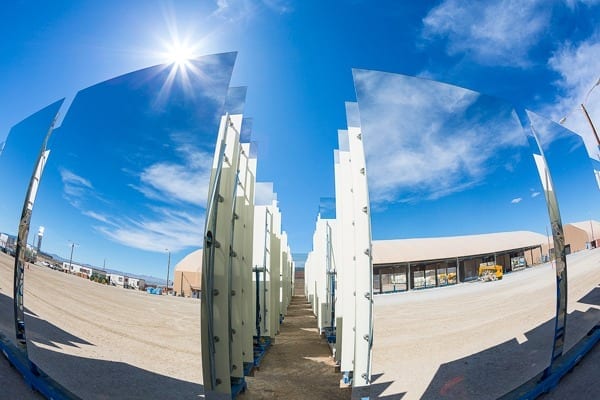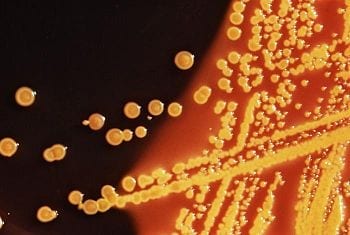
New Stanford research outlines the path to a possible future for California in which renewable energy creates a healthier environment, generates jobs and stabilizes energy prices.
Imagine a smog-free Los Angeles, where electric cars ply silent freeways, solar panels blanket rooftops and power plants run on heat from beneath the earth, from howling winds and from the blazing desert sun.
A new Stanford study finds that it is technically and economically feasible to convert California’s all-purpose energy infrastructure to one powered by clean, renewable energy. Published in Energy, the plan shows the way to a sustainable, inexpensive and reliable energy supply in California that could create tens of thousands of jobs and save billions of dollars in pollution-related health costs.
“If implemented, this plan will eliminate air pollution mortality and global warming emissions from California, stabilize prices and create jobs – there is little downside,” said Mark Z. Jacobson, the study’s lead author and a Stanford professor of civil and environmental engineering. He is also the director of Stanford’s Atmosphere/Energy Program and a senior fellow with the Stanford Woods Institute for the Environment and the Precourt Institute for Energy.
Jacobson’s study outlines a plan to fulfill all of the Golden State’s transportation, electric power, industry, and heating and cooling energy needs with renewable energy by 2050. It calculates the number of new devices and jobs created, land and ocean areas required, and policies needed for infrastructure changes. It also provides new estimates of air pollution mortality and morbidity impacts and costs based on multiple years of air quality data. The plan is analogous to one that Jacobson and other researchers developed for New York state.
Read more . . .
The Latest on: Renewable energy plan
[google_news title=”” keyword=”Renewable energy plan” num_posts=”10″ blurb_length=”0″ show_thumb=”left”]
via Google News
The Latest on: Renewable energy plan
- 3 Renewable-Focused ETFs Just Hit 3-Year Lows. Are They Worth Buying Now?on April 27, 2024 at 12:30 am
Geopolitical tensions have also emphasized energy security over the energy transition. And although many long-term emissions reduction goals remain intact, the relative strength of oil prices ...
- Dave Monti: New rule streamlines offshore renewable energy developmenton April 26, 2024 at 7:40 pm
Secretary of the Interior Deb Haaland announced this week that the Bureau of Ocean Energy Management and the Bureau of Safety and Environmental Enforcement have finalized updated regulations for renew ...
- Lawmakers scale back legislation to limit local control over renewable energy projectson April 26, 2024 at 4:32 pm
A group representing counties still opposes the legislation and worries it lays the groundwork for a state takeover of the process to consider new wind, solar and transmission projects.
- UFlex switches to renewable energy for packaging plant in Karnataka, Indiaon April 26, 2024 at 9:49 am
The agreement is a Power Purchase Agreement with Amplus Phoenix Private Limited, which will supply clean energy under a group captive power policy.
- Decoding Xcel Energy Inc (XEL): A Strategic SWOT Insighton April 25, 2024 at 10:08 pm
On April Xcel Energy Inc ( NASDAQ:XEL ), a leading utility service provider, released its 10-Q filing, revealing a comprehensive overview of its financial performance and strategic positioning. Xcel ...
- How to Find and Choose a Renewable Energy Supplier for Your Homeon April 25, 2024 at 5:01 am
In states with deregulated energy markets, finding a renewable energy supplier is fairly simple. The nuts and bolts of those plans are not.
- Hawaii’s Ambitious Renewable Energy Plan Is Threatened By HECO’s Uncertain Futureon April 24, 2024 at 5:19 pm
Hawaii’s renewable energy sector is stepping up support for policies aimed at financially bolstering Hawaiian Electric Co., which has been battered by accusations that the utility started the fire ...
- EU hydrogen plans must be supported by subsidies, regulations- energy execs sayon April 24, 2024 at 8:31 am
European governments will need to offer energy companies subsidies and regulatory support to produce renewable hydrogen to make the transition to clean fuels from fossil fuels, senior energy ...
- Japan's Sumitomo plans $1.3 billion renewable power storage network, Nikkei reportson April 23, 2024 at 12:40 pm
Japanese trading house Sumitomo Corp is planning to invest 200 billion yen ($1.29 billion) to build battery facilities in Japan for storing excess power generated by wind or solar farms, the Nikkei ...
- California just went 9.25 hours using only renewable energyon April 23, 2024 at 6:26 am
Nearly every day for the last six weeks, its grid has run on solar, wind, and other clean energy sources for hours at a time.
via Bing News










